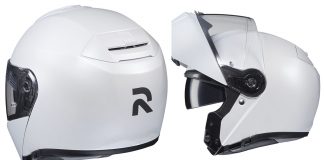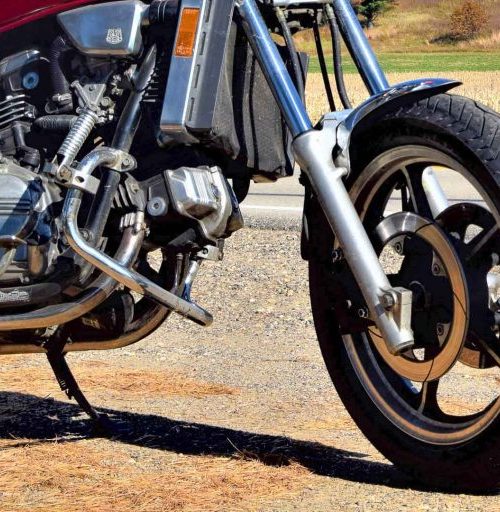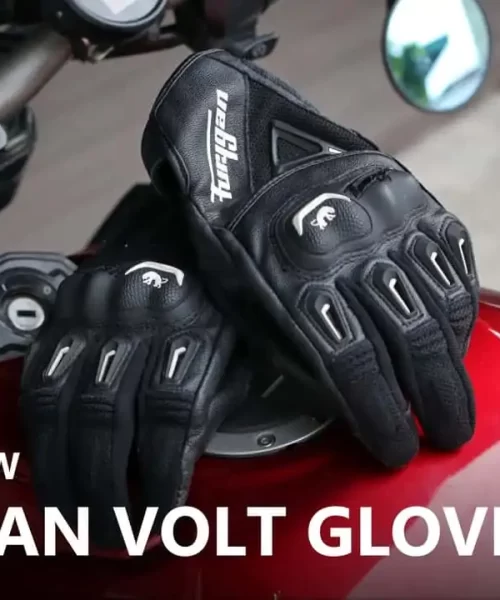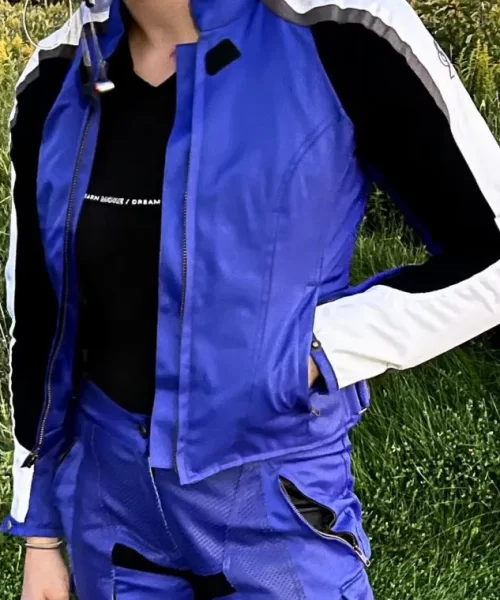HJC RPHA 90 Test: Good for 12-15 Hour Days
My previous modular was hitting five years of age, which is the recommended life for helmets, and I happened to be at a motorcycle show that had all kinds of helmets to size test. I had been eyeballing the HJC RPHA 90 Modular on the web for the past few months, and I was looking forward to trying it on. The medium was comfortable, so that was good enough for me after reading and watching many reviews
As I was unboxing this beautiful Pearl White helmet, I noticed immediately that it felt very light. I went to my closet and pulled down my previous modular helmet that I have put many 12-15 hours days in. A non-scientific weight check of one in each hand demonstrated to me that the HJC RPHA 90 was considerably lighter. I have since determined the RPHA 90 is about a half-pound lighter than my previous helmet. I hadn’t ridden with it yet, but I liked it already.
I transferred my Sena SMH10 clamp-on, mounting it just behind the jawline sunshield slide control. Various YouTube reviews had suggested using a sticky mount. However, after test fitting, it seemed the microphone boom would still reach. Pulling out the cheek pads to mount the speakers was easy, and it is a nice feature to have indents for the speakers so there is no pressure point created.
Tucking the speaker wires around the back outside edge was also easy to do and appears to be a secure fit. I practiced finding the sunshade slider and moving the front, top and rear air vents to their open and closed positions. The HJC RPHA 90 comes with an attachable anti-fog inner shield, but I chose to try my first cold and dewy ride without it installed.
You will notice a loud click when the chinbar locks to the metal posts. The faceshield is very easy to remove and install, and the shield closed position clip/snap is a real securing device. You have to pinch the clip/snap to get the faceshield out of locked closed position.
It was 49 degrees when I took off for a breakfast ride at 7:30 a.m. I rode down my street, and the very first thing I noticed was how quiet my exhaust was. I have 44,000 miles on my stock Yamaha Royal Star Venture and whatever keeps the exhaust pipes new stock quiet, has slowly blown out. Inside my helmet, I had showroom sounding pipes again.
Even before getting to the stop sign at the end of my block, I noticed how light the RPHA 90 felt and I rolled my head around to prove it to myself. I did a quick hot air mouth exhaust, and the shield fogged. It was going to warm up, so I didn’t turn around to get the attachable anti-fog inner shield. I have had anti-fog shields for the past ten years, so I found my first and only negative for this helmet in my first 60 seconds of wearing it.
There is a first “just cracked” position of the shield, and that is how I rode with it until accelerating up the freeway onramp. I have a shortie shield on my Venture, so the wind hits my helmet about at the top of my forehead. When it is windy, I usually feel helmet buffet at 65 (or so) mph. The RPHA 90 didn’t shake at all. That was a pleasant surprise as buffeting on whole day rides is annoying.
I had about 30 miles of freeway before my exit, so I got a chance to see how it performs relative to my previous modular experiences. I like to ride with my shield open unless it is very hot or very cold. 49 is on the edge. Once I settled into my lane with cruise control on, I fully opened the shield. With the high gusty winds, my old helmet’s shield would get hit by a gust and slam itself closed. The RPHA 90 shield stayed fully open due to strong detents. I closed the faceshield and again immediately noticed some that didn’t happen.
My nose didn’t itch. I don’t know if this happens to anyone else, but for the first few minutes that I close the shield, my nose itches. I open the faceshield, scratch my nose with my gloved index finger, close the shield and open it again to repeat the process three or four times until my nose stops itching. I don’t know why, but closing the RPHA 90 shield doesn’t cause my nose to itch. As the saying goes, “That alone is worth the price of admission!”
When I open my shield, it is usually as I am coming to a stop and I don’t want to be fumbling with the shield opening mechanism when I should have both hands on the bars. The HJC RPHA 90’s clip/snap mechanism is easy to manage with gloves on.
The rear vent was open before I started, and the front and top were closed. I opened the top at 49 degrees and 65 (ish) mph and said “ouch” out loud and quickly closed the vent. A blast of cold air came in quick and strong and right down the middle of my head. I had never felt that kind of top air flow from any of the helmets I previously owned.
Because I am a shield-open kind of rider, I don’t usually need extra ventilation on the top of my head because I have a ton of it hitting my face. When it is over 105 degrees, and I don’t want to have that much hot air hitting my face. When I close the faceshield and, this ventilation will be welcome.
I used the HJC RPHA 90’s sunshield several times, and it did get easier to find the slider. I finally figured out to pretend to bring my left index finger to the middle of my ear and that put the sunshield slider right under my thumb. It was easy to operate with both thick cold riding gloves, and later with springtime gloves. I liked the extra darkness that it provided when riding with the sun in my face.
A little thing I noticed is that the front tip of the shell above the shield sticks out a bit farther than my previous brand modular. I was able to use that as a sun visor when riding directly into the sun. I tipped my head down just a bit and still had a comfortable neck position and view of the road. With my previous helmet, I would have held my left hand up to block the sun.
I learned from a smart old rider to put a half-inch strip of black tape along the bottom edge of the face shield. When the faceshield is down, the tape doesn’t block your vision. When you are riding face first in the sun, you can use the tape as a sun blocker to keep both hands on the bars where they belong.
I listen to music while riding, and I noticed I was using less volume at all speeds— a testament to how quiet the HJC RPHA 90 is. I also placed a call to my daughter (“Hey Siri, dial my daughter”) and she said she didn’t hear any wind or road noise.
I like the HJC RPHA 90 modular helmet a lot, and is my next five-year helmet. It has the features that are important to me—light weight, quiet, controls that are easily workable with gloved hands, no buffeting, face shield that stays where I put it, and the safety, quality, and design of the HJC RPHA line.
HJC RPHA 90 Fast Facts
- Sizes: XS-2XL
- Colors: Black; Semi Flat Black; Semi Flat Titanium; Semi Flat Anthracite; Pearl White; White; Darth Vader Star Wars, Tanisk (three versions)
- Weight: 3 pounds, 9.2 ounces (Medium)
- HJC RPHA 90 Helmet Price: From $460 MSRP









![Scorpion Covert Hoodie Review [Motorcycle Jacket Alternative]](https://motogeartalk.com/wp-content/uploads/2023/11/scorpion-covert-hoodie-review-technical-motorcycle-jacket-apparel-2-768x512-1-500x512.jpg)


![Arai Signet-X Test [plus Pro Shade Review]](https://motogeartalk.com/wp-content/uploads/2023/11/arai-signet-x-test-5-768x512-1-500x512.jpg)